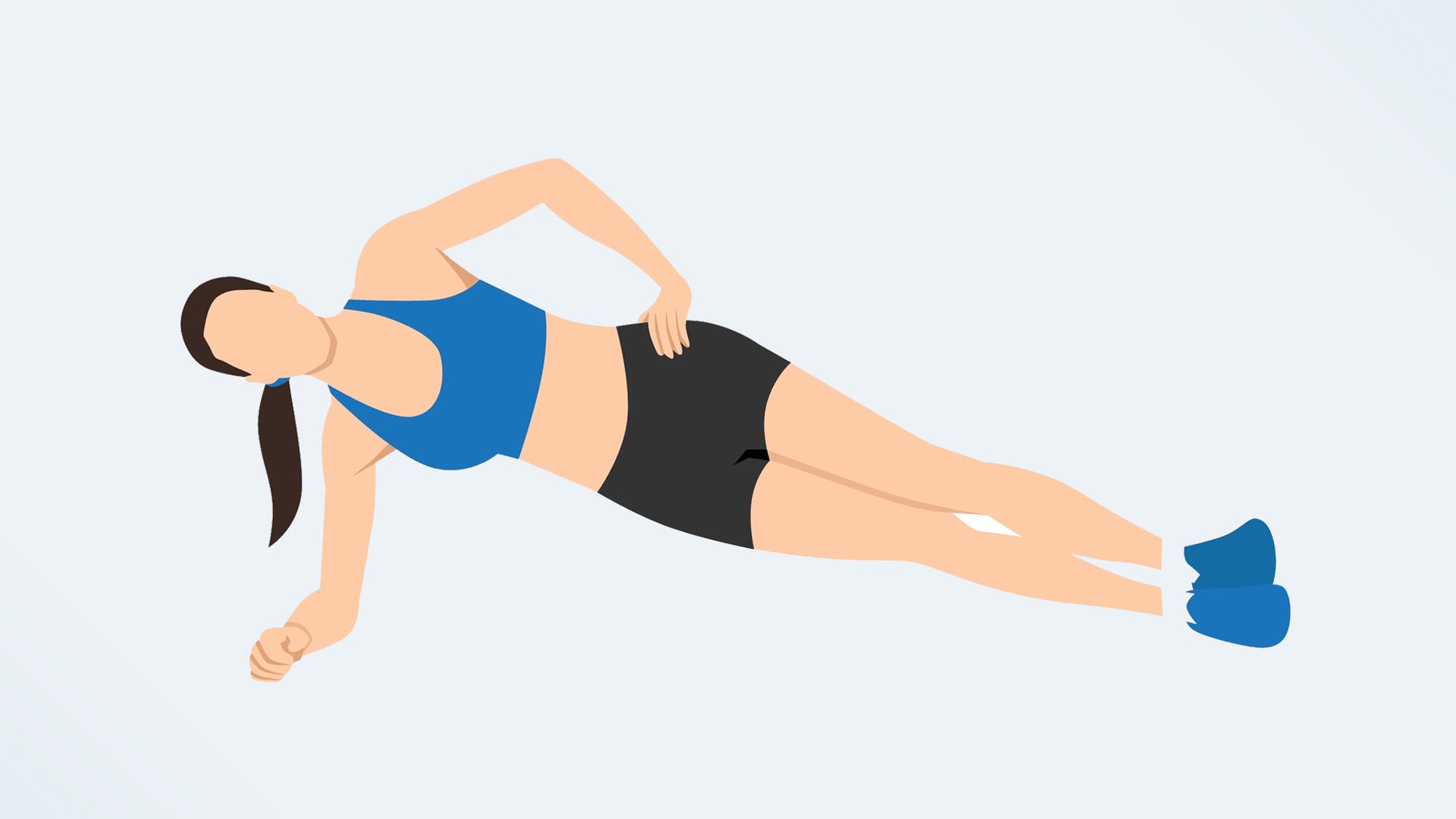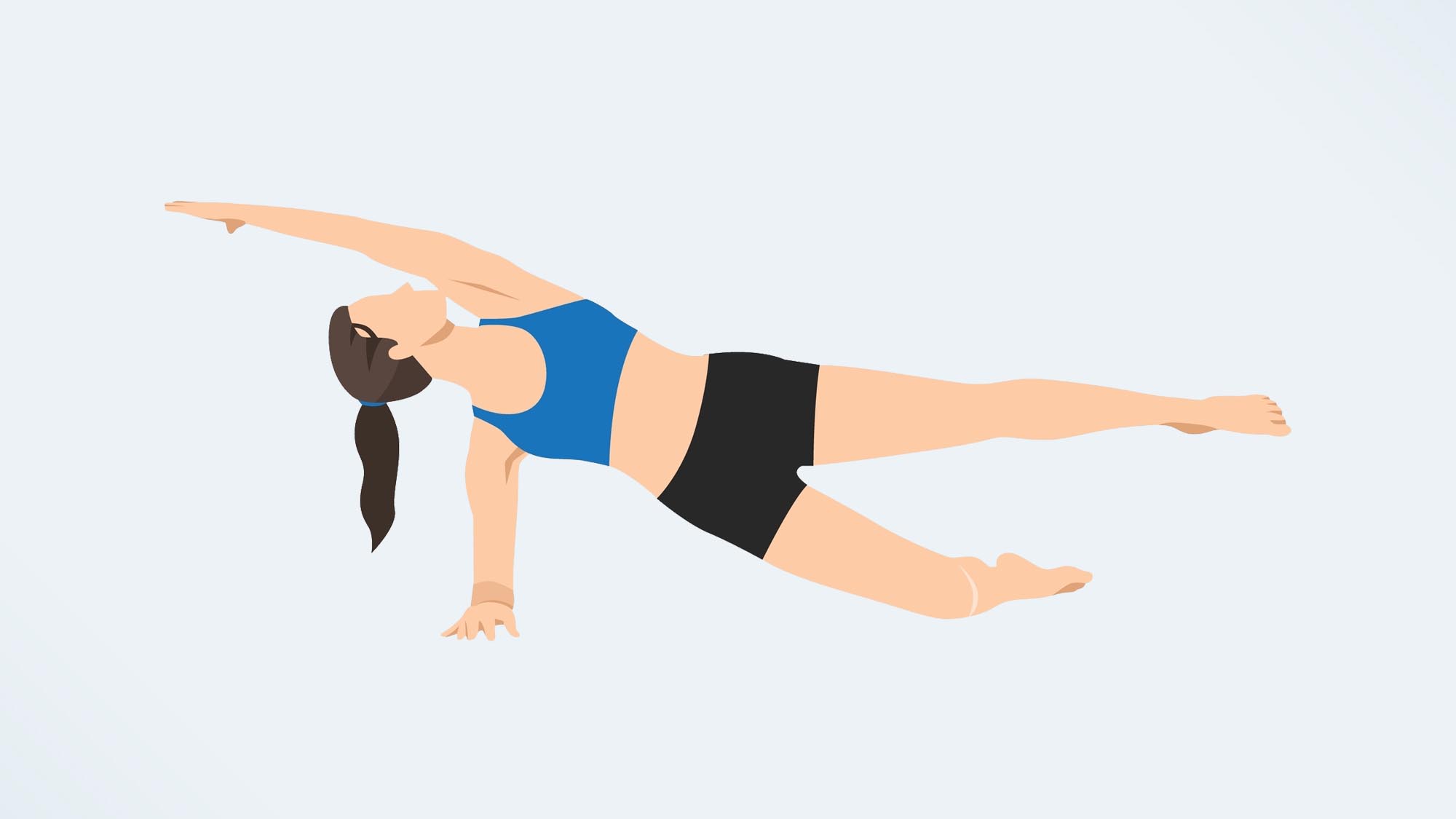I did side planks every day for a week — here's what happened
My abs thanked me and I thanked them back

I often see people in the gym doing sit-ups/crunches, either on a mat or using a stability ball. I also often see them holding the standard plank position without a tremor to be seen in their formidable frames. But I rarely see people doing the side plank. Why is this?
It’s probably because most of us focus on the muscle at the front of our abdomen (the rectus abdominus) when we want to target our core. This is the so-called ‘six-pack’ muscle. We tend to neglect our oblique muscles, which run along the side of our core. I’m no different. I have a reasonably strong central core (though no six-pack, I can assure you), but I want to believe my obliques will improve themselves just to fit in with the other muscles.
So I decided to do one minute of side plank on each side every day for a week, just to see how I’d feel. I knew there would be no visual improvement, but I did think I’d notice something, somewhere. And I was right.
What are the benefits of the side plank?
The side plank primarily works the external and internal oblique muscles, which generally do not get the attention they deserve. These muscles help rotate and bend your trunk, and they protect your spine by strengthening the surrounding area. The side plank also works deep stabilizing muscles in the hip, trunk, and up to your shoulders, and it gives your glutes something to think about too.
In addition, it works the rectus abdominis and serratus anterior (the large muscle that fans across your upper ribs and helps to move your shoulder blade). In fact, you may first feel the effect of the move in your back, before you develop decent form.
Adding the side plank to your routine will improve posture and help reduce the possibility of developing lower back pain. Research has shown that a strong core can alleviate chronic lower back pain and help protect athletes from developing such problems in the first place.
How to do the side plank



Use a mat for this exercise or do it on a soft surface to limit the pressure on your arm and feet.
Sign up to get the BEST of Tom's Guide direct to your inbox.
Get instant access to breaking news, the hottest reviews, great deals and helpful tips.
- Lie straight out on one side, legs stacked. Rest your forearm flat on the floor and ensure your elbow is in line with your shoulder.
- Engage your abs and raise your hips and knees from the floor, keeping a straight line from head to feet. Only your forearm and foot should be in contact with the ground.
- Don’t allow your hips to sag and keep looking straight ahead for the duration.
- You can rest your top arm on your hip or, to make the move more challenging, raise it towards the ceiling.
- If you are new to the side plank, try to hold form for 15 seconds, then change to the other side. Otherwise, hold for 30-60 seconds and add time as you become stronger.
I did the side plank every day for a week. Here’s what happened
I was surprised by the exercise
I had not done a side plank for a long time, so day one was tough. The first 30 seconds were relatively easy but the next 10 were hard and the last 20 were grueling. And that was just one side. I had to take a moment before I switched sides. I found I had been concentrating so hard on maintaining form — in particular, ensuring my hips didn’t drop — that I was not breathing evenly, which made the exercise harder than it needed to be. By the end of the two minutes, my body was quivering from the effort and I was sweating a little. No easy achievement from maintaining what is basically a stationary position.
I noticed an improvement
Day two was also hard, but marginally less so. It was as if my body was resigned to what was being asked of it and there was no going back. By day three I wasn’t watching the seconds crawl by (which helped a lot), I did not need a break before switching sides and I fairly sprang to my feet when I was done. By day four I was beginning to wonder if I could add to the time by the end of the week.
And that’s exactly what happened. I kept to a minute on each side on days five and six, but on day seven I managed a minute and a half on each side. I was a little wobbly towards the end, but it was a major improvement in only a week.
I felt stronger
I do not believe I built strength in such a short period, but I felt stronger through my core and a low-grade lower back niggle had vanished. Also, I noticed I was more aware of my posture when sitting. No more slouching in front of the laptop for me. Most surprising is the fact that doing the side plank has become part of my daily routine. I do it the morning before my body really knows what’s happening. I do not recommend doing the move just before you go to bed, as I did once during my first week. It gets the heart racing, which is not what you need when you want to fall asleep.
Let me be clear: the side plank, while hugely effective, is not the most thrilling exercise in the world, but that’s what variation is for. My next step is to raise my top leg and hold it for, say, 30 seconds. One can dream.
More from Tom's Guide
John is a writer and editor based in London. He was worked for magazines such as Runner’s World, Men’s Health, Women’s Health and Cosmopolitan. A keen runner, what he lacks in ability he makes up for with enthusiasm and excuses.

